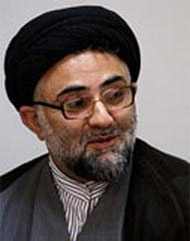Rationalization of Oral History Books (part I)
Reliable sources enrich Rationalization
Akram Dashtban
Translated by: Fazel Shirzad
2018-5-22
Note: Following report is based on an invitation in which history experts are asked questions about oral history. In this regard, one of experts, as his perspective, has answered to one of questions titled "The amount of rationalization and appendix in oral history books". We'll read these comments as follows.
■
Rationalization, in oral history, provides a greater sense of comprehension of text for contemporary readers and even next generations. "What does Rationalization mean?" It is a question that Hojatoleslam Seyyed Vali Hashemi, author of Sacred Defense's books and deputy of Mazandaran province's Art Center, said: Rationalization of oral history includes of documentary materials that a complier provides them by using reliable sources about individuals, places, concepts, and terms and with the aim of eliminating the ambiguity of the text, and transfer more information to reader.

He explained about the extent of the rationalization in the text: The extent of rationalization should convince the complier of work.
This extent may be two lines or half, but it should not be larger than a quarter of a page or half a page. In fact, the rationalization should not be so large that it affects the structure of the work. Rationalization can be included in books in four forms: first, using of reference in text. Second, using of footnote. Third, it can be used at the end of chapter and Fourth, using of appendix.
The author of book "Hajj Imran" further states that rationalization in the work is one advantage for a book and author, and added: rationalization clarifies two points; firstly, the complier is a researcher, and secondly, s/he considers readers’ comprehension.
He said that if interviewer had more proficiency and skill over subject and the manner of interviewing, he would lower the necessity of paying attention to rationalization. I disagree with this idea, because narrator may speak about a military district, but there is no information about its geographical location; therefore, complier is responsible for rationalization in footnote on military districts or terms. Also, it is possible, a person does not remember memories well; here, complier clarifies subject through Reliable maps and resources.
Hashemi went on to say about oral rationalization practices in oral history books, and said: "rationalization initially introduces places, individuals, and concepts." Secondly, it introduces the issue correctly.Thirdly, shows that author's work is based on research and does not involve the transcription of an interview, and ultimately adds to the scientific power of a book and the richness of materials.
He went on to explain the issues that threaten rationalization: "It should be noted that if rationalization is more than text, it may cause narrator to be dissatisfied or subject to be lost. It may also be confusing for someone who rationalize, or cause him/her to use Reliable sources or sites. In rationalization, there may be a nominal similarity that complier is not able named it well, or source which introduced by complier is unknown.
Hashemi added: To resolve problems in the field of resources, complier should use of reference books and if s/he uses a site as a reference, it should be mentioned in footnote completely. Of course, in the field of sacred defense, you should refer to valid sites in related area or official sites of army and Sepah[1].
■
Iranian oral history website questions experts about oral history, and publish responses to readers. Total responses will have remarkable results. If you have any questions, please feel free to submit it via this page to read comments from experts of oral history!
[1] Islamic Revolutionary Guard Corps
Number of Visits: 5052








The latest
- 100 Questions/ 3
- Report on the unveiling of the book "Sangar-e Towfiq"
- Unveiling of the book "Oral History: What and Why"
- Oral History News in September & October 2025
- Third Regiment: Memoirs of an Iraqi Prisoner of War Doctor – 3
- 100 Questions/ 2
- Mohammad — The Messiah of Kurdistan
- The 371st Night of Memory – 3
Most visited
- Third Regiment: Memoirs of an Iraqi Prisoner of War Doctor – 2
- The 371st Night of Memory – 3
- 100 Questions/ 2
- Mohammad — The Messiah of Kurdistan
- Third Regiment: Memoirs of an Iraqi Prisoner of War Doctor – 3
- Oral History News in September & October 2025
- Unveiling of the book "Oral History: What and Why"
- Report on the unveiling of the book "Sangar-e Towfiq"
From Javanrud to Piranshahr
The Memoir of Reza MohammadiniaThe book From Javanrud to Piranshahr recounts the life and struggles of Commander Reza Mohammadinia, who spent part of the Iran–Iraq War in the western and northwestern regions of the country. During those years, he held responsibilities such as deputy commander of the Seventh Region of the Islamic Revolutionary Guard Corps (IRGC), acting head of the Javanrud district, service on the southern fronts, director of ...
Tactical and Strategic Analysis and Limitations
The present paper, entitled “A Critical and Scholarly Study of Dr. Hossein Alaei’s Two-Volume Book: Tactical and Strategic Analysis and Limitations”, is a research work that examines and evaluates the two-volume book “An Analytical History of the Iran-Iraq War”. In this study, the strengths and weaknesses of the work are analyzed from the perspectives of content critique, methodology, and sources.Clarifying the Current Situation; Perspectives of the Oral History Website
The definition of a “journalist” and the profession of “journalism” is not limited to simply “gathering,” “editing,” and “publishing breaking news.” Such an approach aligns more with the work done in news agencies and news websites. But now, after years of working in the field of books for various news agencies, newspapers, and magazines, when I look back, I realize that producing and compiling content for ...

